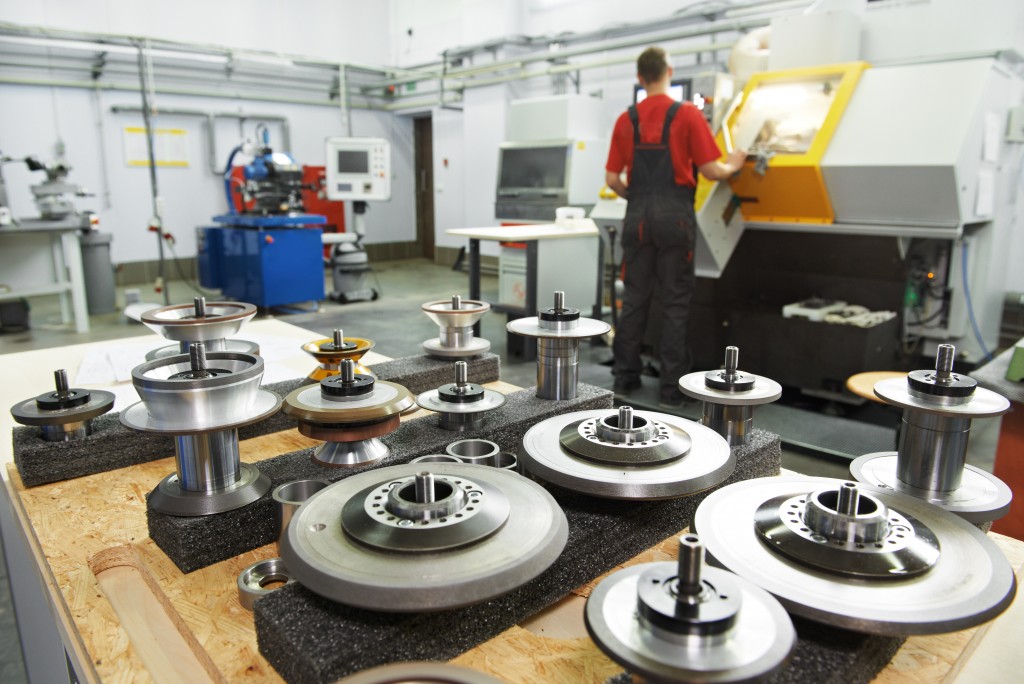No doubt, manufacturing has been the backbone of the economy. It provides an army of jobs for millions of Americans and, more importantly, it gives the county the commodities it needs. A glaring example is toilet paper. It’s no accident bidet has become popular during the pandemic. People find it easier to adapt than to squeeze through a long line of buyers longing for toilet papers. And end up going home empty.
As important as the role is, manufacturing must protect itself from the virus at all costs. As manufacturing leaders, we must adhere to government protocols not just because the government has implemented them but also because these protocols protect us. Where so many self-proclaimed experts and shady shaman have placed their pronouncements in public, it’s paramount we separate the truth from the half-truths.
Check out CDC’s COVID-19 guidelines for manufacturers below. Digested for your greater convenience.
The 6-feet Rule
It’s highly-likely this is where many manufacturers will cringe. The 6-feet rule will sound theoretically sound. The protocol is logical given that the virus thrives in close contact. But implementing it will be an uphill climb in an organization that is designed to work together. Unlike office work, manufacturing needs people manning machines and assembly lines.
It’s no secret manufacturing has been adversely affected by the virus, as most are, but it still is a pillar of the economy. To date, manufacturing is the fifth-largest employer in America, with about 11.9 million Americans under its belt. Health care remains the top employer with approximately 20.5 million employees.
CDC guidelines detail that manufacturing facilities must be reconfigured, so workers are spaced at the very least 6 feet apart. Now, if you can’t figure that out, 6 feet is 6 rulers placed one after the other. That’s a lot of space.
That means you need to modify your workstations. And that includes the production line and manufacturing’s most proud line — the assembly line. As much as possible, workers must not be facing one another. If no physical barrier exists, use markings and signs in the working area. Even breaks, social distancing must be exercised.
Mind the Heat
This is where it gets a little sticky. Industrial facilities are designed to be a denser workplace with many people working side by side in an enclosed space. Health perils, in this sense, have always been nipping at the heels of workers, more so in a pandemic. Having efficient HVAC systems can go a long way in implementing a safer workplace.
This is where expert HVAC maintenance is key. Air conditioning repair, for one, can ensure AC units work with maximum efficiency and less downtime. That way, workers get the best internal weather in the warmer months to be productive. Even better, aircon technicians can factor in effective Internal Air Quality (IAQ) feature so the virus won’t spread via the airconditioning.
Take note that enclosed spaces are a breeding ground for the virus. We should take a lesson from the USS Theodore Roosevelt aircraft carrier, which caught the virus in early 2020.
Thus, be it hard-mounted or on a pedestal, fans should be positioned such that these won’t blow from one worker to another. Personal fans are discouraged. That way, airborne viruses or aerosolized ones don’t spread.
Admin Controls

Right from the onset, facility access must be limited to essential workers only. Additionally, aim to hold a meeting for a smaller group of people sparingly. And that means non-essential meetings are out of the question.
Upon entering the facility, a single-file of workers distanced 6 feet from one another is recommended. The production floors must be monitored. You can assign team leaders to do so or, better yet, do it via a CCTV camera.
As much as possible, stagger the break times. The goal is to discourage a large number of people from converging in one area. The same holds true for arrival/departure times.
Visual cues (signs, floor markings) must be provided to remind workers of social distance.
Cloth Face Coverings
CDC acknowledges the importance of cloth face coverings. It’s definitely one protective measure that added to social distancing can boost employee safety. It’s even more vital when social distancing in the industrial facility cannot be implemented, such as work activity that requires a team to finish.
Reducing the number of respiratory droplets spread when a person talks, coughs, or sneezes, cloth face coverings are crucial in the fight to contain the virus.
But it may not be enough. CDC distinguishes that cloth face coverings are not PPE. They cannot replace PPE (N95 face mask) or medical face masks (surgical mask). As such, employers should provide readily-available options when these face-covering options fail. We’re talking about disposable face masks or extra face cloth coverings.
Certainly, CDC guidelines are stringent. But it’s definitely a small price to pay for the greater good.





